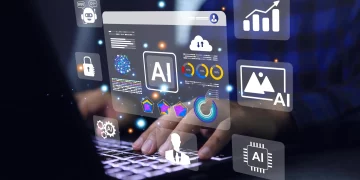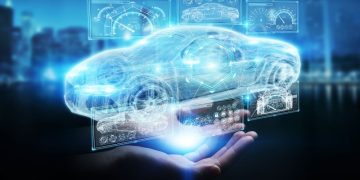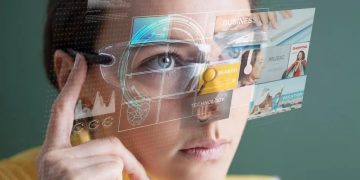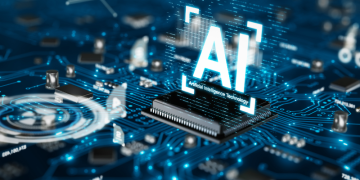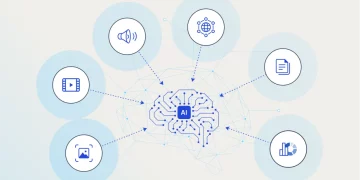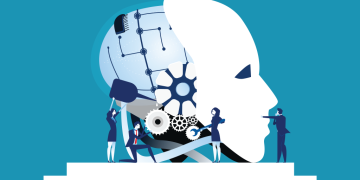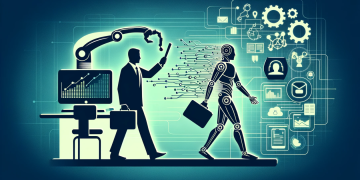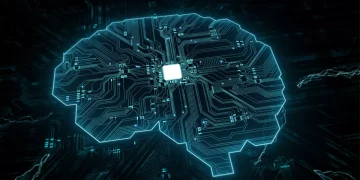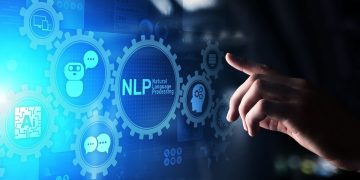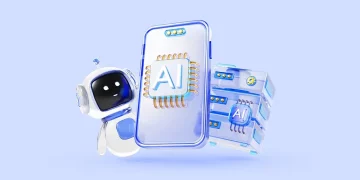As artificial intelligence (AI) and machine learning (ML) technologies continue to advance at a rapid pace, machine learning is no longer a concept of the future—it has become a core technology reshaping industries across the globe. From autonomous driving and financial forecasting to personalized recommendations and medical diagnostics, machine learning is revolutionizing how businesses operate and how we live. As an enabling technology, machine learning is constantly evolving, from foundational algorithms to complex deep learning models, driving transformation in numerous sectors.
This article explores the future of machine learning, focusing on new algorithms that are disrupting the industry landscape. These algorithms are not only enhancing the performance of existing models but also creating unprecedented opportunities and challenges for various sectors.
The Evolution of Machine Learning and Its Future Directions
Machine learning, at its core, refers to the ability of machines to learn from data and improve over time without being explicitly programmed. Over the past few decades, machine learning has progressed from basic statistical models to highly sophisticated neural networks and deep learning techniques. However, the future of machine learning looks even more promising, with several trends and innovations emerging.
1. Democratization of Machine Learning
In the past, machine learning was largely confined to research labs and large corporations due to the significant computational power and expertise required. Today, we are seeing a democratization of machine learning, thanks to advancements in cloud computing, open-source software, and user-friendly frameworks like TensorFlow and PyTorch. This shift allows startups, small businesses, and even individuals to leverage machine learning technologies without needing extensive technical knowledge or massive computational resources.
What this means for the future:
- More widespread adoption: Industries that were previously slow to adopt AI, such as agriculture and education, are now integrating machine learning into their processes.
- Increased innovation: A larger pool of developers and researchers will lead to more diverse ideas and innovations in the field, accelerating progress across various domains.
2. Automated Machine Learning (AutoML)
AutoML is one of the most exciting trends in machine learning. It automates the process of applying machine learning to real-world problems, from model selection and hyperparameter tuning to data preprocessing. By simplifying the complexities involved in creating ML models, AutoML enables non-experts to build powerful machine learning models.
What this means for the future:
- Lowering the entry barrier: More individuals and organizations can deploy machine learning models without needing specialized expertise.
- More accessible AI: AutoML has the potential to bring AI solutions to industries that would otherwise lack the resources to develop them.
3. Reinforcement Learning (RL) and Its Real-World Applications
Reinforcement learning, a branch of machine learning where an agent learns to make decisions by interacting with an environment, is gaining significant traction. Traditionally associated with games like Go and chess (as demonstrated by DeepMind’s AlphaGo), reinforcement learning is now being applied in more practical scenarios such as robotics, autonomous vehicles, and personalized recommendations.
What this means for the future:
- Autonomous decision-making: RL will enable machines to make increasingly complex decisions autonomously in real-time, with applications in industries such as logistics, healthcare, and finance.
- Improved customer experiences: RL can further optimize personalized recommendations in e-commerce, entertainment, and advertising, tailoring suggestions to users’ unique preferences.
Disruptive Algorithms in Machine Learning
While traditional machine learning models such as linear regression and decision trees still have a significant place in many applications, new algorithms and techniques are emerging that are pushing the boundaries of what’s possible. These innovative algorithms are creating new opportunities and transforming industries.
1. Transformers and Attention Mechanisms
The introduction of transformer models, such as the GPT (Generative Pre-trained Transformer) series, has revolutionized natural language processing (NLP). Transformers, unlike traditional RNNs (Recurrent Neural Networks), rely on attention mechanisms, which allow them to process and generate sequences of data more efficiently by focusing on relevant parts of the input.
Why it’s disruptive:
- Contextual understanding: Transformers can process context more effectively, leading to far superior performance in tasks like language translation, sentiment analysis, and even code generation.
- Scalability: Transformers scale remarkably well, enabling them to handle massive datasets and complex tasks. Models like GPT-3 have shown how large models can generate human-like text, opening new possibilities in conversational AI, content creation, and automated problem-solving.
Real-world impact:
- AI-powered chatbots and virtual assistants are becoming more conversational and context-aware.
- Automated content creation is now more feasible, with AI systems writing articles, scripts, and even poetry that are difficult to distinguish from human authorship.
2. Generative Adversarial Networks (GANs)
Generative Adversarial Networks (GANs) have emerged as one of the most revolutionary advances in machine learning. GANs consist of two neural networks—the generator and the discriminator—that work in opposition to one another. The generator creates data, while the discriminator evaluates it. Through this adversarial process, the generator becomes increasingly adept at producing realistic data, such as images, videos, and even audio.
Why it’s disruptive:
- Creation of high-quality synthetic data: GANs can generate realistic media, such as synthetic images, music, and even deepfake videos, making them valuable tools in creative industries, video production, and entertainment.
- Data augmentation: GANs can also generate synthetic data for training machine learning models, reducing the need for labeled data, which is often scarce.
Real-world impact:
- Art and entertainment: GANs are being used in digital art, game design, and even creating hyper-realistic avatars and virtual environments.
- Healthcare: GANs are used to create synthetic medical data for research, helping to augment existing datasets and improve model training.

3. Federated Learning
Federated learning is a decentralized machine learning approach that allows models to be trained across multiple devices or servers without sharing the raw data. Instead of sending data to a central server, each device trains the model locally and only shares the model updates. This process improves data privacy and security.
Why it’s disruptive:
- Privacy and security: By keeping data on local devices, federated learning can improve privacy for sensitive data, such as health information, financial records, or personal communications.
- Collaboration across distributed networks: Federated learning makes it possible for multiple organizations to collaboratively train models without sharing their proprietary data, enhancing collaboration across sectors like finance, healthcare, and mobile technology.
Real-world impact:
- Mobile devices: Google has already implemented federated learning on mobile phones to improve services like predictive text and voice recognition while ensuring user data remains private.
- Healthcare and IoT: Federated learning is being explored in sectors where privacy is paramount, allowing models to be trained on medical data without compromising patient confidentiality.
4. Quantum Machine Learning (QML)
Quantum computing has the potential to revolutionize machine learning by enabling computations that are infeasible with classical computers. Quantum machine learning (QML) leverages quantum algorithms to perform data analysis and optimize models much faster than traditional approaches.
Why it’s disruptive:
- Solving complex optimization problems: QML can be applied to optimize problems in logistics, finance, drug discovery, and other fields where the number of possible solutions is too large for classical computers to handle efficiently.
- Acceleration of training processes: Quantum computers could dramatically reduce the time required to train machine learning models, making real-time, large-scale AI applications more feasible.
Real-world impact:
- Drug discovery: Quantum machine learning has the potential to speed up the simulation of molecular interactions, revolutionizing fields like pharmaceuticals.
- Complex modeling and simulation: QML may unlock faster and more accurate models in areas such as climate forecasting, financial modeling, and AI-driven cybersecurity.
Conclusion: The Future Is Full of Possibilities
Machine learning is poised to continue its rapid evolution, with new algorithms and advancements expanding the boundaries of what’s possible. From transformers revolutionizing natural language processing to quantum computing potentially accelerating AI’s development, the future of machine learning is not only about improving existing methods but also about creating entirely new ways to think about and use data.
As machine learning becomes more integrated into daily life, its potential to disrupt industries and solve complex global problems will only grow. Companies and researchers who stay at the forefront of these innovations will play a crucial role in shaping the future of AI, creating opportunities across sectors ranging from healthcare to entertainment, finance to robotics.
The next wave of machine learning innovations will not only enhance the capabilities of AI but will also open up new possibilities that were once unimaginable, ultimately paving the way for smarter, more efficient, and more personalized technologies.




